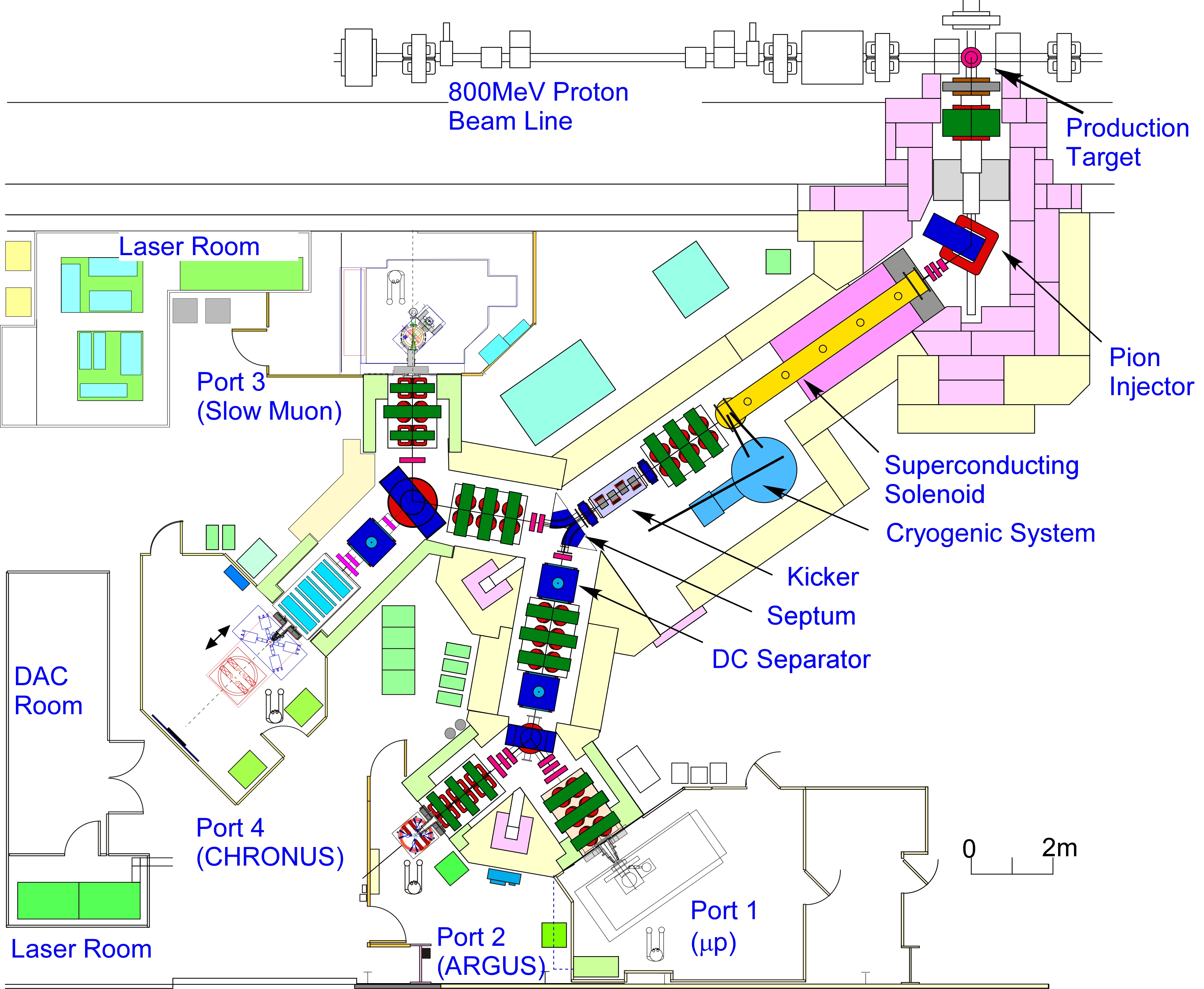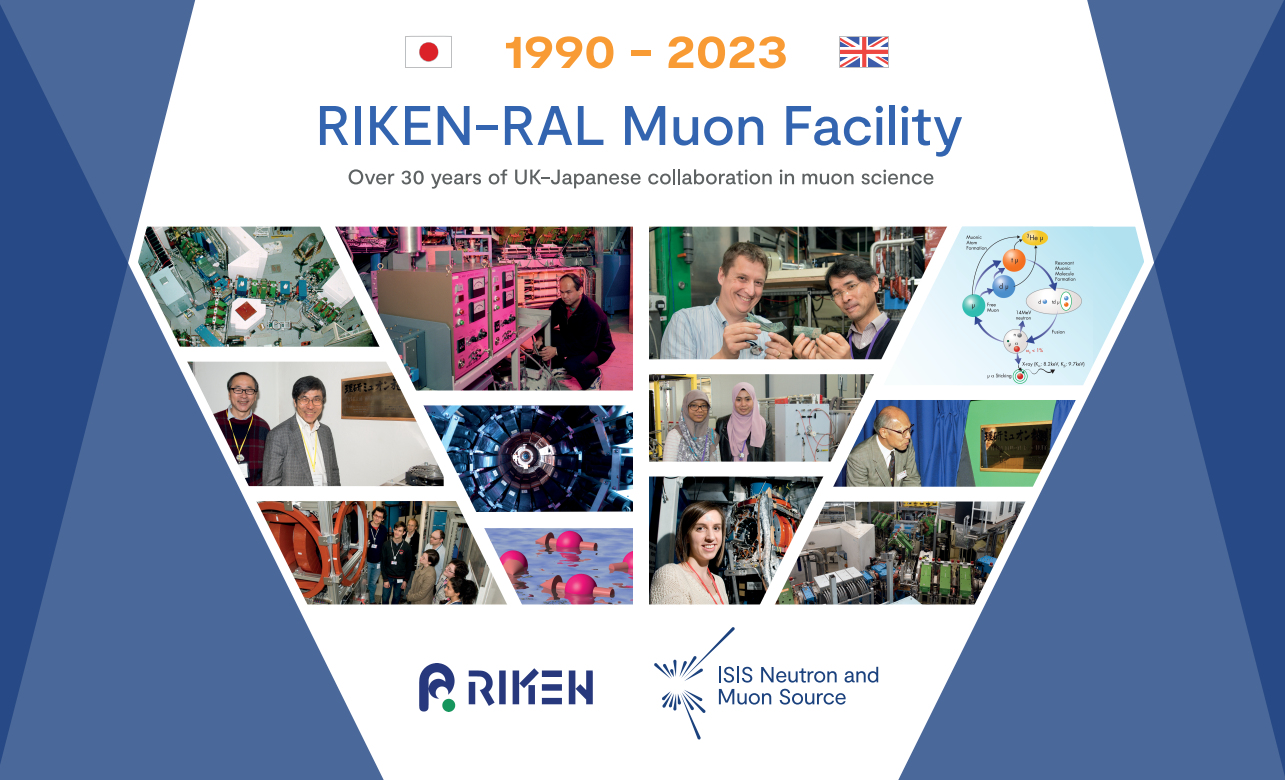 Main Contact
Main Contact
Other Contact
- Dr Adam Berlie
- Dr Steve Cottrell
- Dr Sayani Biswas
Former Directors of the RIKEN-RAL Office
- Prof Kanetada Nagamine
- Dr Tei Matsuzaki
- Dr Philip King
Introduction
The RIKEN-RAL Muon facility (diagram, right) was constructed by RIKEN at Rutherford Appleton Laboratory in the UK through the RIKEN Nishina Centre for Accelerator Based Science. For over 30 years, ISIS and RIKEN collaborated in a wide variety of muon science through use of the facility for pure and applied muon studies. The facility is now owned and operated by ISIS, and underwent a major refurbishment in 2021 as part of the RIKEN-ISIS collaboration.
30 years of partnership between RIKEN and ISIS was marked in September 2020 by a series of online posts and videos (Covid prevented a physical celebration). A celebration was held at RAL in March 2023 to honour the partnership and for the signing of a new memorandum of understanding between ISIS and RIKEN, following the handing over of the facility to ISIS under a previous agreement. A timeline of the facility was produced for this event, showing partnership and science milestones through the 30 years of collaboration, which can be downloaded here.
Description of the facility
The facility utilizes intense pulsed proton beam provided by the ISIS synchrotron accelerator. Thanks to a unique superconducting solenoid in the beam line, the facility produces a strong source of backward decay pulsed mu+ or mu- in the momentum range from 20 MeV/c to 120 MeV/c as well as surface mu+ at 27MeV/c. A pulsed magnetic kicker is used to split the double-pulsed structure of the muon beam, enabling two experiments to be performed simultaneously in different beam areas. Important research activities such as fundamental and applied science using muonic atoms and studies of condensed matter by muon spin rotation/relaxation/resonance are actively pursued.
A brochure describing the muon method and giving examples of muon science can be found here.
Science examples
ExpertiseRIKEN-RAL Muon Group members have a wide variety of expertise, in areas such as:
- condensed matter and molecular physics
- muon technique development
- muon beamline and spectrometer design
- low-energy muon production
- muon catalysed fusion
- atomic and nuclear physics studies using muons
- elemental analysis using muons

![]()
